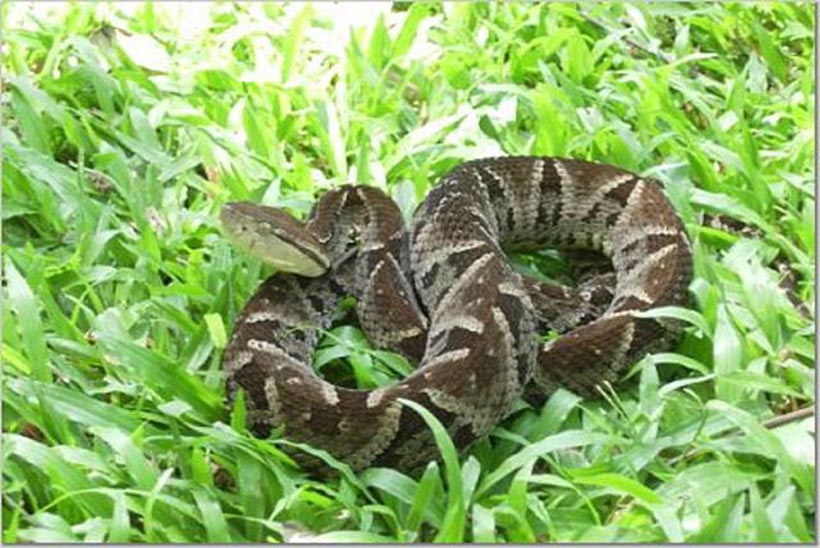Costa Rica News – Parts of the planet warm and cool during El Niño and La Niña. And infectious diseases also wax and wane in step with the climate cycle. Take malaria—shown to spike in northern Venezuela during cool, La Niña conditions. Or flu pandemics, which often follow months after La Niña sets in. Now researchers have linked another public health risk to El Niño climate cycling: poisonous viper bites.  Their study area was Costa Rica—where health centers keep rigorous records on snakebites. They compared nine years of those snakebite records—including some 6,500 bites—to climate data over the same period.
Their study area was Costa Rica—where health centers keep rigorous records on snakebites. They compared nine years of those snakebite records—including some 6,500 bites—to climate data over the same period.
And they found that snakebites were two to three times as prevalent in the hottest and coldest years of the El Niño climate cycle.
Sounds counterintuitive—you might expect the climate extremes to have opposite effects. But the researchers say in hot, dry years, plant productivity peaks, driving an increase in the number of rodents—aka snake food, potentially increasing the number of snakes.
And snakes tend to move around more in hot, dry weather—increasing chances they’ll encounter—and attack—an unlucky farmer. In cold, wet years, on the other hand, prey numbers plummet—forcing snakes to travel beyond their usual slithering grounds to eat—again increasing chances of an unlucky meeting.
The study is in the journal Science Advances. [L. F. Chaves et al, Snakebites are associated with poverty, weather fluctuations, and El Niño] The researchers also found two more variables that correlate strongly with Costa Ricans’ odds of being bit: poverty and destitute housing.
A reminder that, when it comes to dangers from environmental disruption, it’s often the least fortunate who are at the greatest risk. —Christopher Intagliata,
From Scientific American

